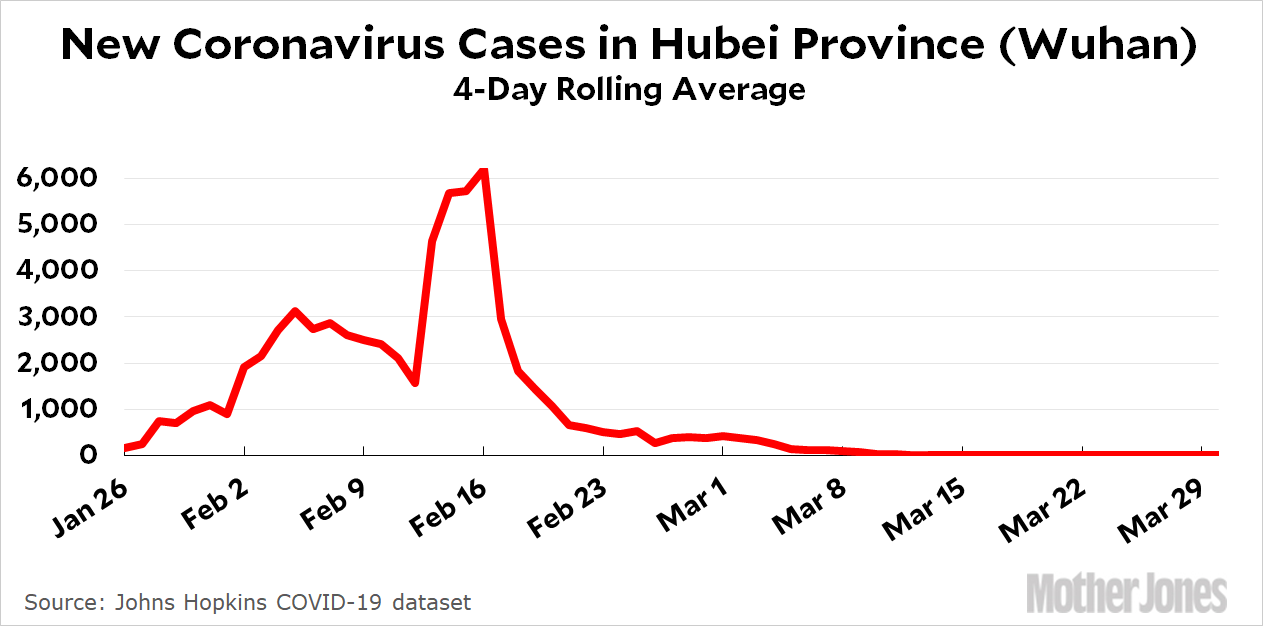Wuhan is where the coronavirus originated, and Wuhan is therefore the first place we’re seeing it end. But are we? Wuhan is “reopening,” but their version of reopening is more stringent than our version of total lockdown:
People are allowed out of their residential complexes only if they have a return-to-work pass issued by their employer, and only if the government-issued health code on their cellphone glows green — not orange or red — to show that they are healthy and cleared for travel. Residents report that some complexes deemed infection-free have quietly lost that status, without explanation.
In the malls that opened this week, people must stand five feet apart on escalators, and clothes that customers have tried on must be sprayed with disinfectant. Subway passengers must wear masks and sit two seats apart; footage on state media showed near-deserted cars and stations.
But even with all these restrictions still in place, apparently it’s not working:
Chinese authorities are discovering that allowing people — even those without fevers who are wearing surgical masks and are doused in hand sanitizer — to get too close to each other risks a new rise in infections. Recent media reports have focused on “silent carriers,” and studies have found that as many as one-third of people infected with the coronavirus show delayed or no symptoms. “The possibility of a new round of infections remains relatively high,” National Health Commission spokesman Mi Feng said Sunday.
This is pretty bad news. Wuhan isn’t showing a “steady decline” in new cases. They haven’t “passed the peak.” They have literally gone to zero and stayed there for nearly two weeks:

Despite this, and even with fairly stringent social distancing measures remaining in effect, they are still shutting down movie theaters and karaoke bars and have continued their ban on foreigners entering China.
The next few weeks will be critical for the rest of us. As I mentioned this morning, the key to understanding the spread of COVID-19 is understanding how well various countermeasures work. Wuhan is our first field test of this. If it fails even with countermeasures still in effect nearly a month after the number of new cases had dropped to less than 2 percent of their peak—and a week after new cases had gone to zero—we might have a very long wait ahead of us.
We’re about two months behind Wuhan. If we follow their path, we’ll be in lockdown at least through the end of May. Probably longer, since our countermeasures will never be as draconian as theirs. End of June?














